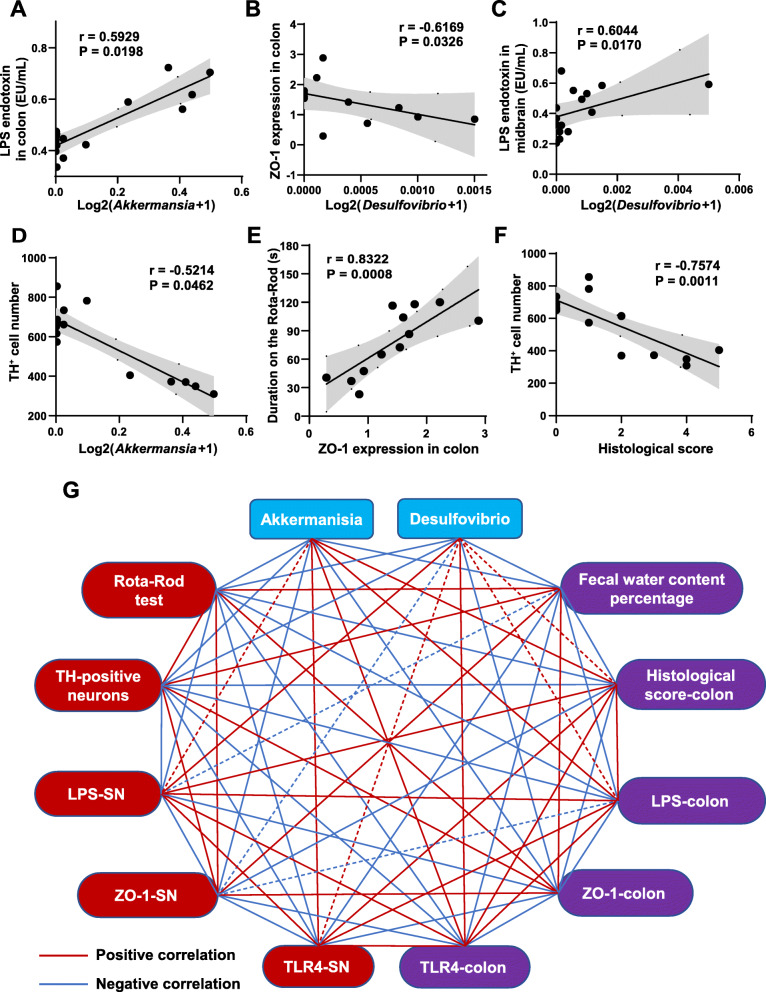Fig. 7.
Correlations among different results support the possible involvement of the microbiota-gut-brain axis in the development of the rotenone-induced mouse model. A LPS levels in the colon were positively correlated with relative abundance of Akkermansia. B Relative expression of ZO-1 in the colon detected by western blot was inversely correlated with relative abundance of Desulfovibrio. C Levels of LPS in the midbrain containing the SN were significantly positively correlated with relative abundance of Desulfovibrio. D TH+ cell numbers were negatively correlated with relative abundance of Akkermansia. E Rota-Rod test data were significantly positively correlated with relative expression of ZO-1 in the colon detected by western blot. F TH+ cell numbers were negatively correlated with H&E histological scores in the colon. G Correlations among different experimental results of microbiota-gut-brain axis. The blue nodes represent gut microbiota. The red nodes represent the results in the SN of the mouse model and the purple nodes represent the data in the colon. The red lines represent positive correlations while the blue lines represent negative correlations. The solid lines mean significant correlations, and the dotted lines represent no correlations

